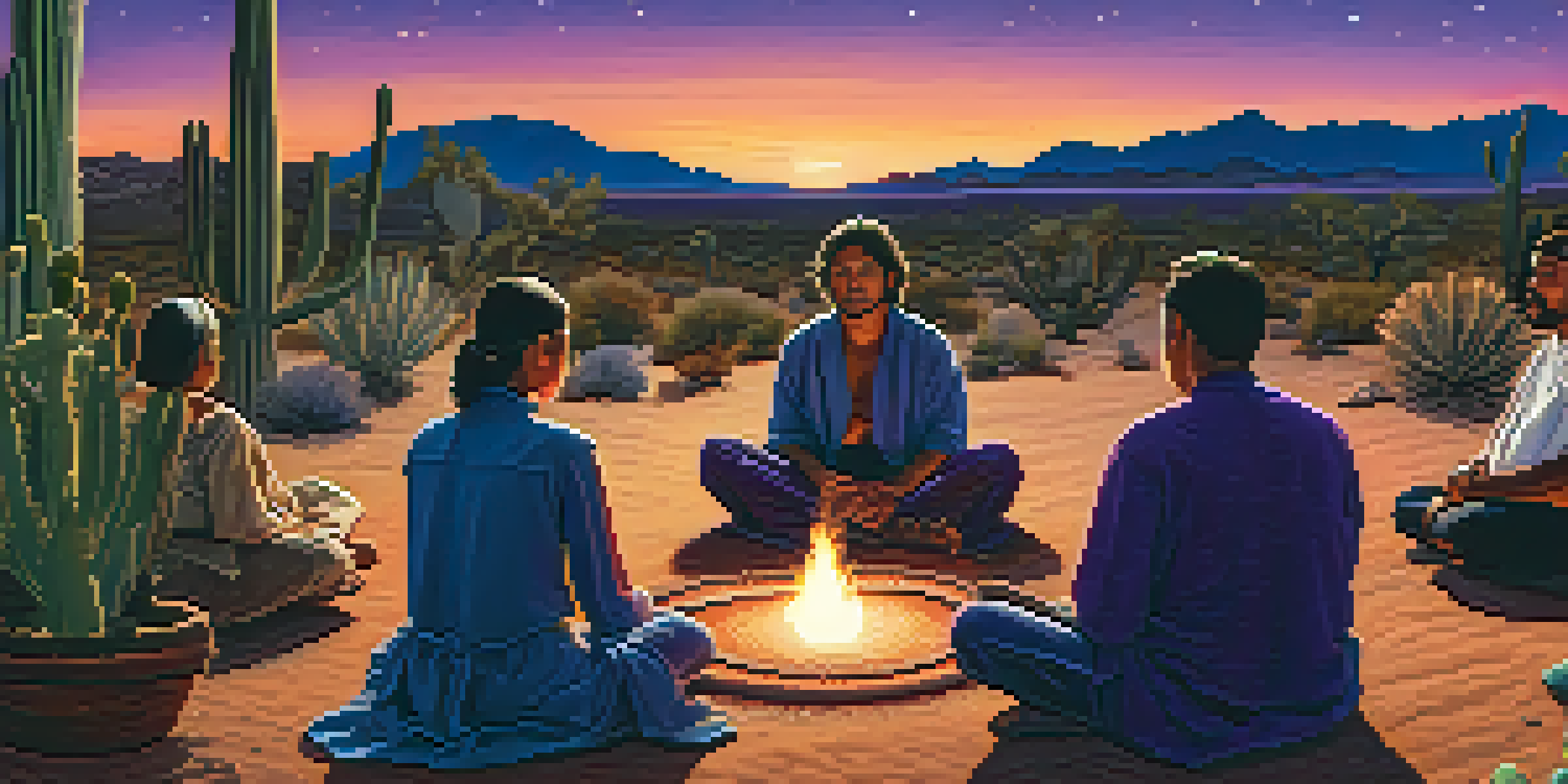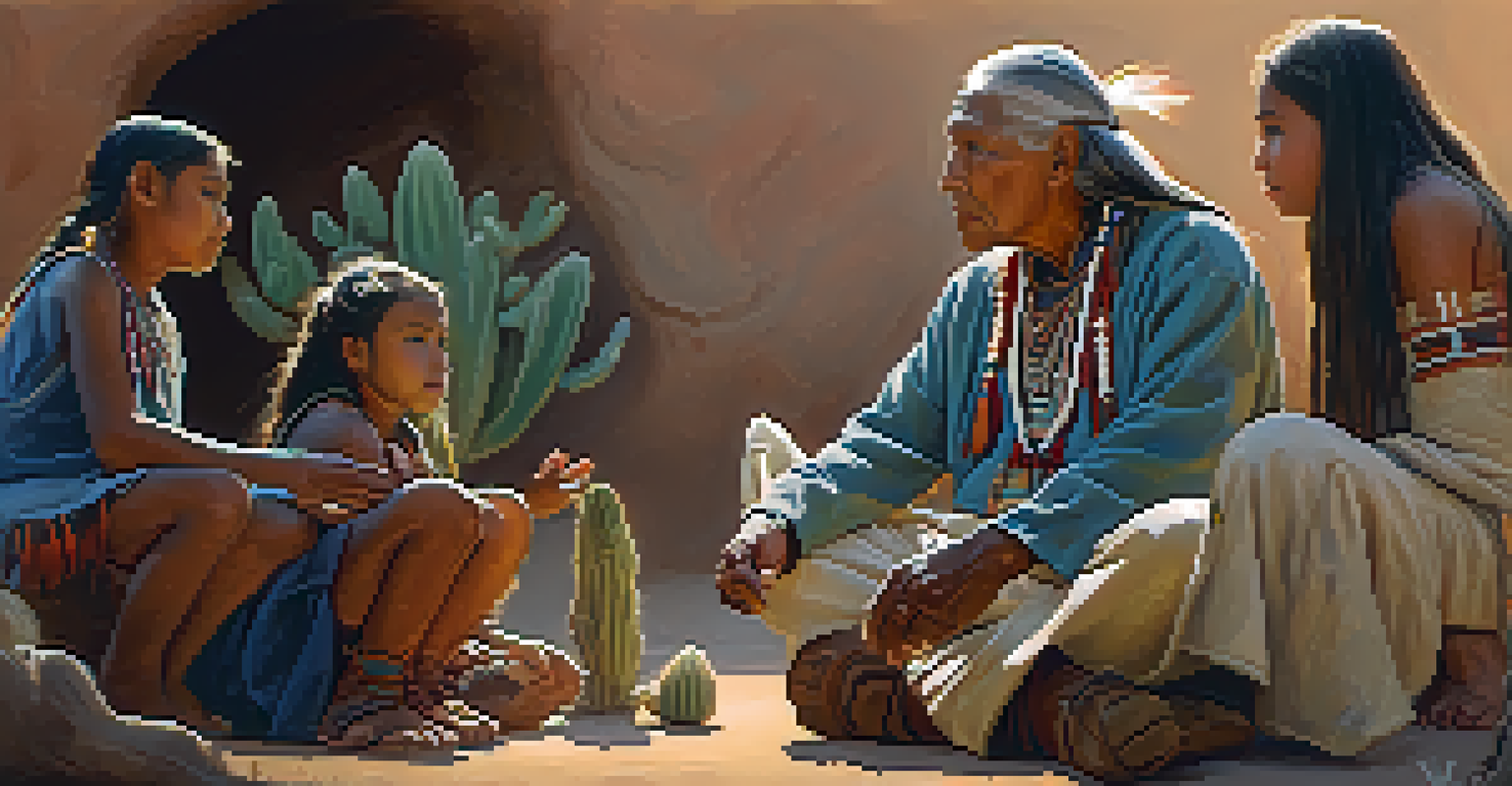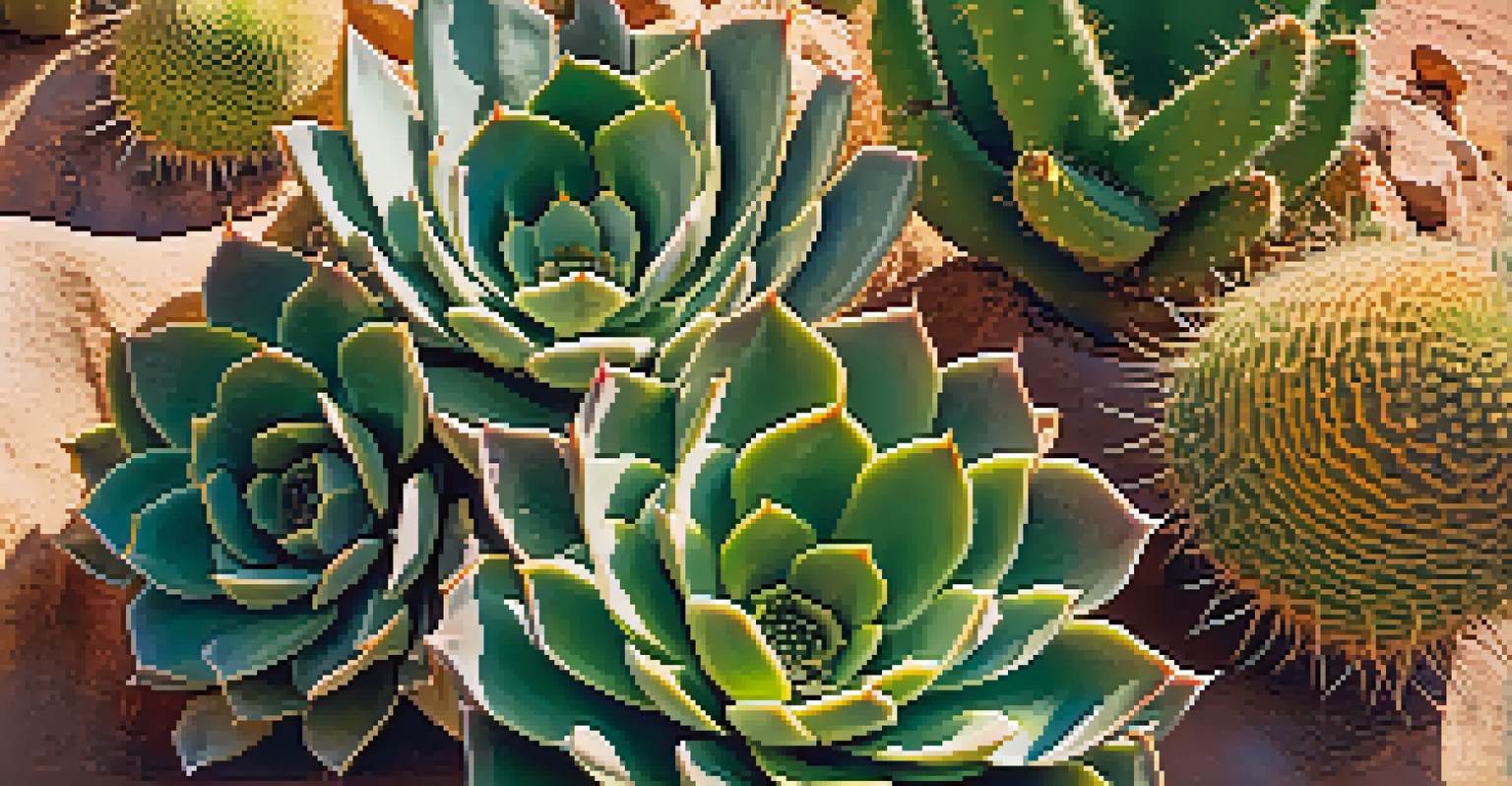Peyote Ceremonies and Community Empowerment

Understanding Peyote and Its Cultural Significance
Peyote is a small cactus that has been used for millennia in various indigenous cultures, particularly among Native American tribes. Known for its psychoactive properties, peyote plays a central role in spiritual and religious ceremonies, serving as a conduit for connection to the divine. These ceremonies are not just about the plant itself; they are steeped in cultural significance that fosters a sense of identity and belonging among participants.
The use of psychedelics can be a deeply spiritual experience that fosters personal and communal healing.
The use of peyote is often accompanied by traditional songs, prayers, and rituals that have been passed down through generations. This rich tapestry of cultural practices helps to preserve the history and heritage of the communities that partake in these ceremonies. For many, engaging with peyote is a powerful reminder of their ancestors and the teachings they left behind.
In contemporary society, where many face disconnection from their roots, peyote ceremonies offer a sacred space to reconnect with both oneself and the community. This journey back to one’s origins is vital for personal and collective healing, reinforcing the importance of cultural identity in today’s world.
Peyote Ceremonies: A Journey of Healing and Reflection
Participating in a peyote ceremony typically involves a communal gathering where individuals engage in self-reflection and healing. The experience is often described as a deep dive into one's psyche, allowing participants to confront personal challenges and traumas. This therapeutic aspect is crucial, as it fosters emotional resilience and encourages individuals to embrace vulnerability.

During these ceremonies, participants often share their personal stories, creating an atmosphere of trust and support. This sharing not only helps individuals process their experiences but also strengthens communal bonds. The collective healing that occurs during these gatherings is a testament to the power of community and shared experience.
Cultural Significance of Peyote
Peyote serves as a vital spiritual conduit for indigenous communities, fostering identity and connection through ceremonial practices.
Moreover, the insights gained through peyote experiences often inspire individuals to take action within their communities. Whether it’s advocating for social justice, preserving cultural traditions, or supporting local initiatives, the transformative power of these ceremonies can lead to meaningful change.
Empowerment Through Cultural Revival and Education
Peyote ceremonies play a vital role in the revival of cultural practices that may have been suppressed over time. By engaging in these rituals, communities can reclaim their heritage and educate younger generations about their cultural identity. This revival is not just about maintaining traditions; it’s about empowering individuals to take pride in their ancestry and cultural practices.
Cultural ceremonies are powerful tools for restoring a sense of identity and belonging among participants.
Education about the significance of peyote and the ceremonies surrounding it is critical in combating stereotypes and misinformation. By sharing knowledge, communities can foster greater understanding and respect for their traditions, both within and outside their cultural spheres. This educational aspect helps create advocates for cultural preservation and empowerment.
In essence, the act of educating others about peyote ceremonies not only strengthens community bonds but also builds bridges with other cultures. This cross-cultural dialogue can lead to mutual respect and cooperation, further empowering communities to stand strong in their beliefs and practices.
The Role of Elders in Peyote Ceremonies
Elders hold a revered position in peyote ceremonies, serving as guides and teachers for younger generations. Their wisdom and experience ensure that the traditions are honored and passed down accurately. This mentorship is crucial in maintaining the integrity of the ceremonies and the cultural teachings that accompany them.
Through storytelling and sharing personal experiences, elders instill values of respect, humility, and community service. Their presence not only enriches the ceremony but also reminds participants of the importance of interconnectedness and collective responsibility. This generational connection fosters a sense of continuity and stability within the community.
Healing Through Community Ceremonies
Peyote ceremonies promote emotional resilience and collective healing by allowing participants to share personal stories in a supportive environment.
Furthermore, the involvement of elders helps to foster a greater appreciation for the ceremonies themselves. As participants learn from those who have walked the path before them, they gain insights that deepen their understanding and appreciation of their cultural practices, ultimately leading to a more empowered and unified community.
Peyote Ceremonies and Mental Health Benefits
Research suggests that psychedelic substances, including peyote, can have significant mental health benefits when used in a ceremonial context. Many participants report reduced anxiety, depression, and PTSD symptoms following these experiences. The safe and supportive environment of the ceremony plays a crucial role in this therapeutic potential.
The communal aspect of peyote ceremonies also contributes to mental well-being. Participants often leave feeling a renewed sense of purpose and connection to others, combating feelings of isolation that many face in modern society. This collective experience can be particularly healing for those who have struggled with mental health issues.
As communities continue to explore the mental health benefits of peyote, there is a growing recognition of the importance of integrating these traditional practices into mainstream discussions about mental health and healing. This integration can lead to broader acceptance and understanding of indigenous practices and their potential to support mental well-being.
Challenges Facing Peyote and Its Cultural Practices
Despite the profound benefits of peyote ceremonies, various challenges threaten their continuation. One major issue is the legal status of peyote, which can limit access for those who wish to participate in these ceremonies. Changes in regulations can impact the ability of communities to practice their traditions freely and safely.
Additionally, the overharvesting of peyote due to increased interest poses a significant risk to the plant’s existence. As demand rises, many indigenous communities are working hard to ensure sustainable practices that honor the plant and its cultural significance. This ongoing struggle for sustainability is essential for the future of peyote ceremonies.
Challenges to Peyote Practices
Legal issues, overharvesting, and cultural appropriation threaten the continuation and integrity of peyote ceremonies among indigenous communities.
Finally, the challenge of cultural appropriation remains a pressing concern. As elements of peyote ceremonies become popularized outside their cultural context, there is a risk of diluting their meaning and significance. Indigenous communities are advocating for respect and understanding of their traditions, urging others to approach these practices with care and reverence.
The Future of Peyote Ceremonies and Community Empowerment
Looking ahead, the future of peyote ceremonies hinges on the ability of communities to adapt and thrive amidst challenges. Education and awareness are vital in ensuring that these practices are respected and preserved for future generations. By fostering understanding and appreciation, communities can create allies in their fight for cultural preservation.
Furthermore, as the benefits of peyote ceremonies continue to gain recognition, there may be opportunities for collaboration with mental health initiatives and wellness programs. This integration could lead to a broader acceptance of indigenous practices and their potential roles in healing and empowerment.

Ultimately, the resilience of these communities and their commitment to their cultural practices will determine the future of peyote ceremonies. With a strong foundation built on tradition, education, and community support, the legacy of peyote and its role in empowerment can continue to flourish.